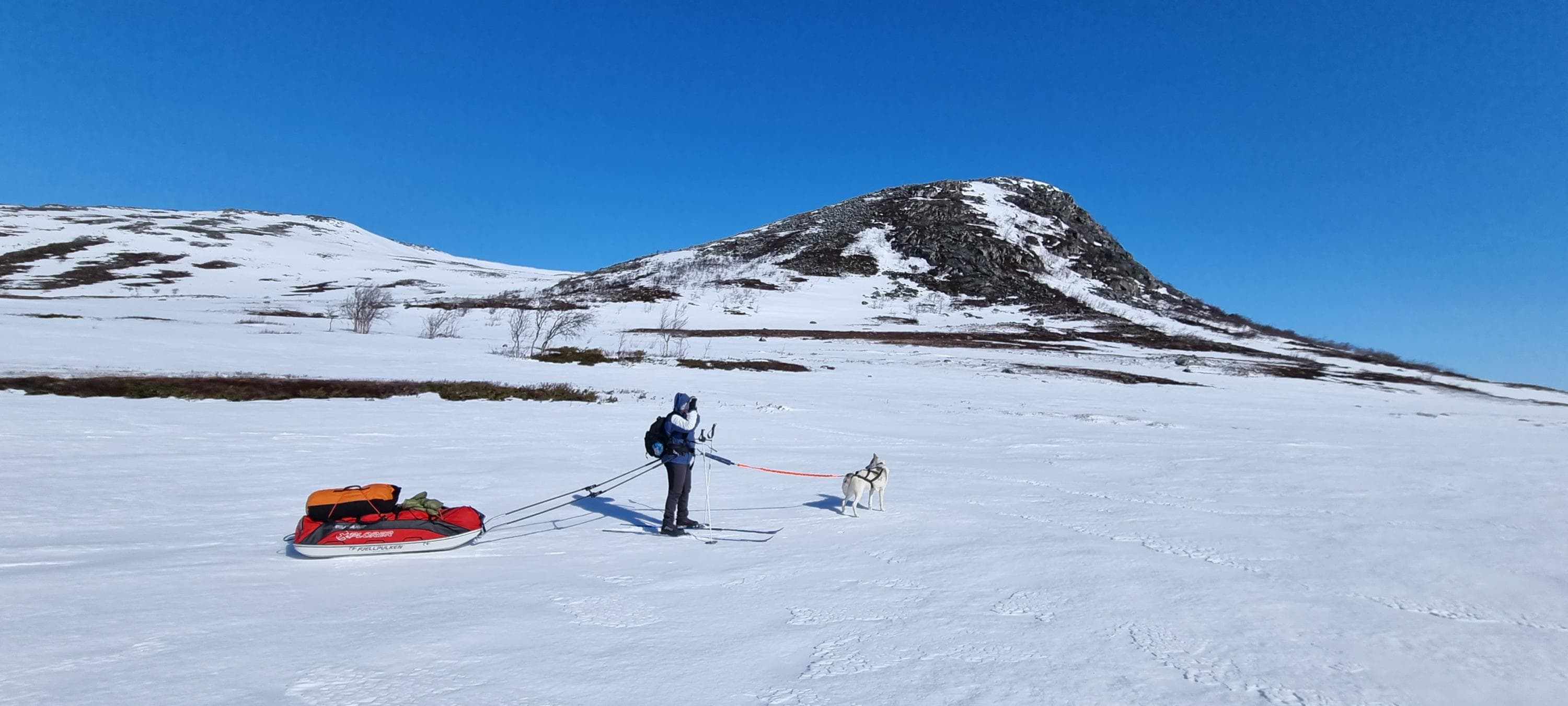Text:
Maria Makkonen works as a customer service officer at the Northern Lapland Nature Centre Siida.
It’s a good idea to start your winter hiking hobby with short, overnight trips in nearby areas before embarking on longer winter hikes in Lapland. Testing your equipment beforehand on a 1–2 night hike is essential for safety. Winter hiking courses offered by companies are also a good way to start. Here are some safety tips to consider before heading out on a winter hike in the fells.
Plan Your Route in Advance Based on Your Skills
Plan your route using marked trails and huts, and inform your closest ones about your itinerary. Provide them with your return date and time when you’ll definitely be out of the wilderness and reachable. During the hike, you might not camp in areas with network coverage, so regular communication won’t be possible. In Northern Finland, network coverage is usually better in high fell areas, while valleys and gorges often lack coverage.
Moving on the fells by skis
On the fells, winter hiking is typically done with backcountry or fell skis. Skins of varying lengths that attach to skis make uphill climbs easier, especially when pulling a pulka loaded with gear. Narrow cross-country skis are not suitable for ski hiking o Lapland’s fells, and snowshoeing on the fells is challenging due to the long distances.
Even If You Sleep in Huts, Always Carry a Tent and Camping Stove
For hut-to-hut winter hikes, you should still bring a tent, camping stove, fire-starting tools, snow shovel, winter sleeping bag, and sleeping pad. Test this gear on a shorter winter hike beforehand to ensure it’s functional and suitable for four-season use. Weather conditions, injuries, or difficulties navigating in the dark may force you to camp in a tent before reaching a hut. In bad weather, stopping and building an emergency shelter, such as a snow pit, might be the only option.

Safety
Navigating in the fells with a map and compass should be second nature. Weather in the fells can change rapidly from clear skies to a snowstorm or fog, reducing visibility to zero. Winter navigation is more challenging as terrain features disappear under the snow, and streams, rivers, ponds, and bogs may not be distinguishable. Mastering compass-based navigation is crucial, and a GPS device with emergency notification capabilities can provide additional safety. These devices can also be rented.
Caring for yourself during a winter hike is especially important. Thirst, hunger, and fatigue are predictable and should be planned for. Bring enough water in thermos bottles for the day, and prepare lunch in advance in a food thermos. Other risks include cold, moisture, pain, and fear. Dress in layers and change out of wet clothes immediately upon camping. Anticipating and avoiding dangerous situations, along with calm decision-making, is essential. You can always adapt your original plans if necessary.
Snow Conditions in Northern Finland
November–December: Snow is often sparse and soft, making travel difficult in low-snow areas or wooded terrain.
January–February: Snow depth may reach nearly a meter, and soft snow can limit progress to just 1 km per hour. In the polar night, there are only a few hours of daylight for traveling between campsites, making daily distances very short, often well under 10 km.
March–April: Conditions improve, with a hard snow crust forming, making skiing easier. Daylight hours are optimal for hikers lasting well into the evening.
Avoid icy or avalanche-prone areas unless you have the necessary knowledge and skills. Take courses or read up on avalanche safety in advance.

Winter trekking in the wilderness
Severe frost in Northern Finland during winter – temperatures of -30 to -40°C in December-February – makes camp activities slower. Using a camping stove, setting up a tent, and changing clothes become more challenging. Additionally, multiple layers of clothing in camp make movement more difficult. Therefore, a more pleasant time for winter trekking is in March-April.
